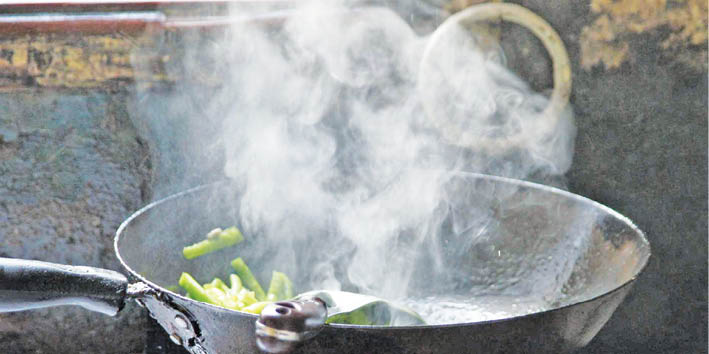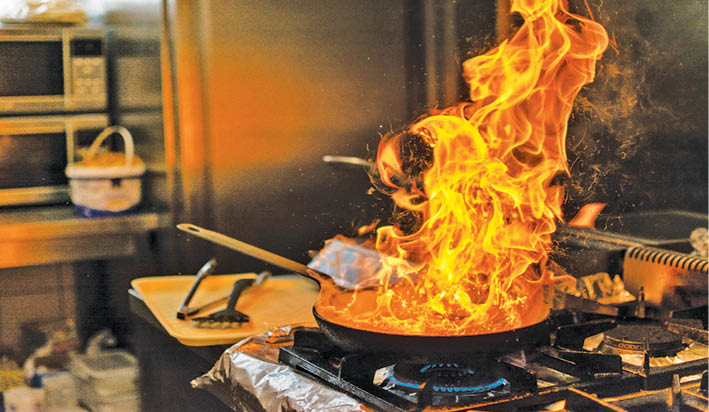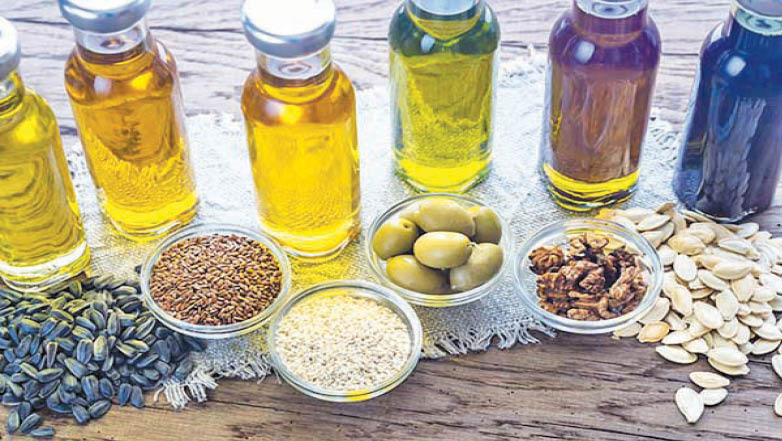Parsi celebrations are synonymous with a good spread of delicious food. In fact, for most of our foodies (and most of us are foodies!), food itself is good enough reason to celebrate! Little surprise then, that we elevate this gourmet celebration into an evolved epicurean experience! PT Writer, Razvin Namdarian engages in a tête-à-tête with Shiraz Kotwal – a Culinary Management Expert, known for curating the most elegant yet fun dining experiences across the board – from Corporate Events, intimate Sit-Down Dinners, Casual Brunches, or then, even your everyday Home-Dinners!
 Last Saturday, I got a call from a PT reader with a definitive request – the lady was at Crawford Market to buy her monthly groceries and was confused with the unending array of oils before her! The increasing number of consumable and cooking oils now available can surely put you on slippery ground! So, here’s a basic insight into the employment of different oils for various foods.
Last Saturday, I got a call from a PT reader with a definitive request – the lady was at Crawford Market to buy her monthly groceries and was confused with the unending array of oils before her! The increasing number of consumable and cooking oils now available can surely put you on slippery ground! So, here’s a basic insight into the employment of different oils for various foods.
But before that, one needs to understand the concept of ‘Smoke Point’ or the temperature at which any oil, on being heated, will start to burn or smoke, leading to its potential degradation of quality in terms of flavour, resulting in an acidulated and burnt taste. If kept smoking in the pan for too long, the oil could set itself ablaze, causing a fire. Equally disastrous, the oil could cause toxicity when consumed, as the triglycerides within degenerate and increase cancer risk, leading to growth of tumors and heart diseases as oxidized fats damage the lining of arteries, causing blockages over time.
Cooking with the wrong oils could spoil the dish as different oils have different uses, with their own differing smoking points, stability factors, and shelf lives, as under:
SALAD OILS OR OILS WITH VERY LOW SMOKE POINTS: An umbrella term encompassing oils used in salad dressings or for preparing dressings and dips. For eg., Mayonnaise, Honey Balsamic and French Vinaigrette. Salad oils have a very low Smoke point (75 to 100 degrees centigrade) it is best to use these oils Au Naturel (In their raw form), apart from providing a creamy texture, the oil helps spread the flavor throughout the salad.
Varieties: Olive Oil, Walnut, Flaxseed, Hemp-seed, Grapeseed, Sesame
Usage: Avoid cooking with these low-tolerance-to-heat-oils; use these as ‘finishing oils’. The distinct, subtle flavors make these oils ideal to drizzle on a salad, sauteed vegetables and pizza. Rich in Oleic acid and polyphenols, these oils help reduce the risk of diabetes, cardiovascular problems and neurodegenerative diseases, while supporting you in your weight loss journey, as also in the reduction of inflammation and risk of heart disease
OILS WITH MODERATE SMOKE POINTS: These oils, with a smoking point between 150 to 190 degrees centigrade, are best used for light sauteing and low temperature baking; Some can be used in their natural forms.
Varieties: Extra Virgin Olive Oil (EVOO), Pumpkin Seed, Avocado, Butter
 Usage: EVOO is an unrefined oil, untouched by chemicals or heat, containing more natural vitamins and minerals. Having a low smoking point, EVOO burns easily and degenerates. Pumpkin Seed Oil is usually used in Vanilla ice-cream, Pumpkin Seed brittle or Pumpkin seed oil drizzle. Avocado, being rich in healthy fats, offers a large content of antioxidants and healthy fats alongside benefits like reducing cholesterol and symptoms of arthritis; and benefitting vision and eye-ailments. Butter, though not an oil, is also best used for quick sautes.
Usage: EVOO is an unrefined oil, untouched by chemicals or heat, containing more natural vitamins and minerals. Having a low smoking point, EVOO burns easily and degenerates. Pumpkin Seed Oil is usually used in Vanilla ice-cream, Pumpkin Seed brittle or Pumpkin seed oil drizzle. Avocado, being rich in healthy fats, offers a large content of antioxidants and healthy fats alongside benefits like reducing cholesterol and symptoms of arthritis; and benefitting vision and eye-ailments. Butter, though not an oil, is also best used for quick sautes.
OILS WITH HIGH SMOKE POINTS: 250 to 400 degrees centigrade are the parameters for these all-rounder oils! You can shallow or deep-fry with these oil.
Varieties: Sunflower, Rice bran, Coconut, Mustard, Canola, Sesame, Almond, Corn-oil, Ghee
Usage: From stir fries and shallow, to deep frying, baking at high temperatures – these oils work well as they are resilient to high temperatures and do not burn or turn rancid. Coconut Oil is semi solid at room temperature and is usually used in the preparation of coastal food. The oil has an acquired flavor which may not appeal to all. It can even be mixed into your morning brew (bulletproof coffee) for an extra boost of energy and taste. The versatile Ghee is India’s answer to lactose-free butter – you could grease a cake tin, put a dollop in a pan-fried dish or for egg preparations… even our Parsi desserts and Voila! Su vaat chhe ‘taste ekdum fari gayu!’ When it’s the pungent mustard oil – you either love the flavor or hate it with a passion – again, an acquired taste! Sesame Oil works well for all cooking purposes. Cold pressed Sesame Oil tastes excellent in dips and salad dressings, toasted Sesame Oil works like a charm with stir fries and Asian flavors. The nutty flavour of Almond oils does wonders for your baked items including cakes and cookies!
Oil Storage: In the days gone by all houses had a dark room with no windows. This was usually the storeroom where the year’s supply of grains and oils were stored. To preserve oil, it needs to be kept in a cool environment. Exposure to oxygen, light, heat will lead to oxidation and the oil goes rancid. A warm kitchen with continuous light compromises greatly on the taste of oils.
I encourage you to do a bit of research on your own when it comes to buying the right oils/fats, best suited to you and your family’s health, preferences and budget. After all, oil’s well that ends well!
- Gourmet Garnish: A Cheesy Affair! - 31 October2020
- Gourmet Garnish: It’s Oil Right! - 17 October2020
- Gourmet Garnish by Shiraz: How To Plan A Successful Event - 26 September2020

Sharing to the parsi cuisine group. Well done!